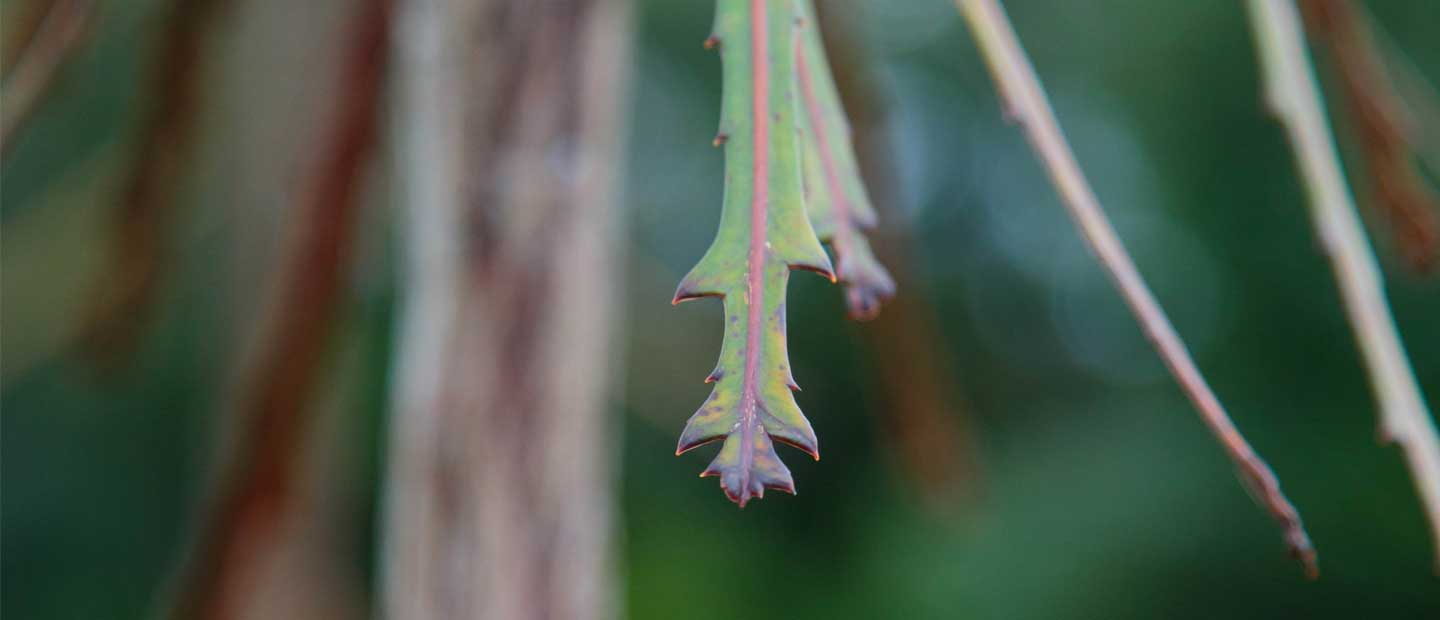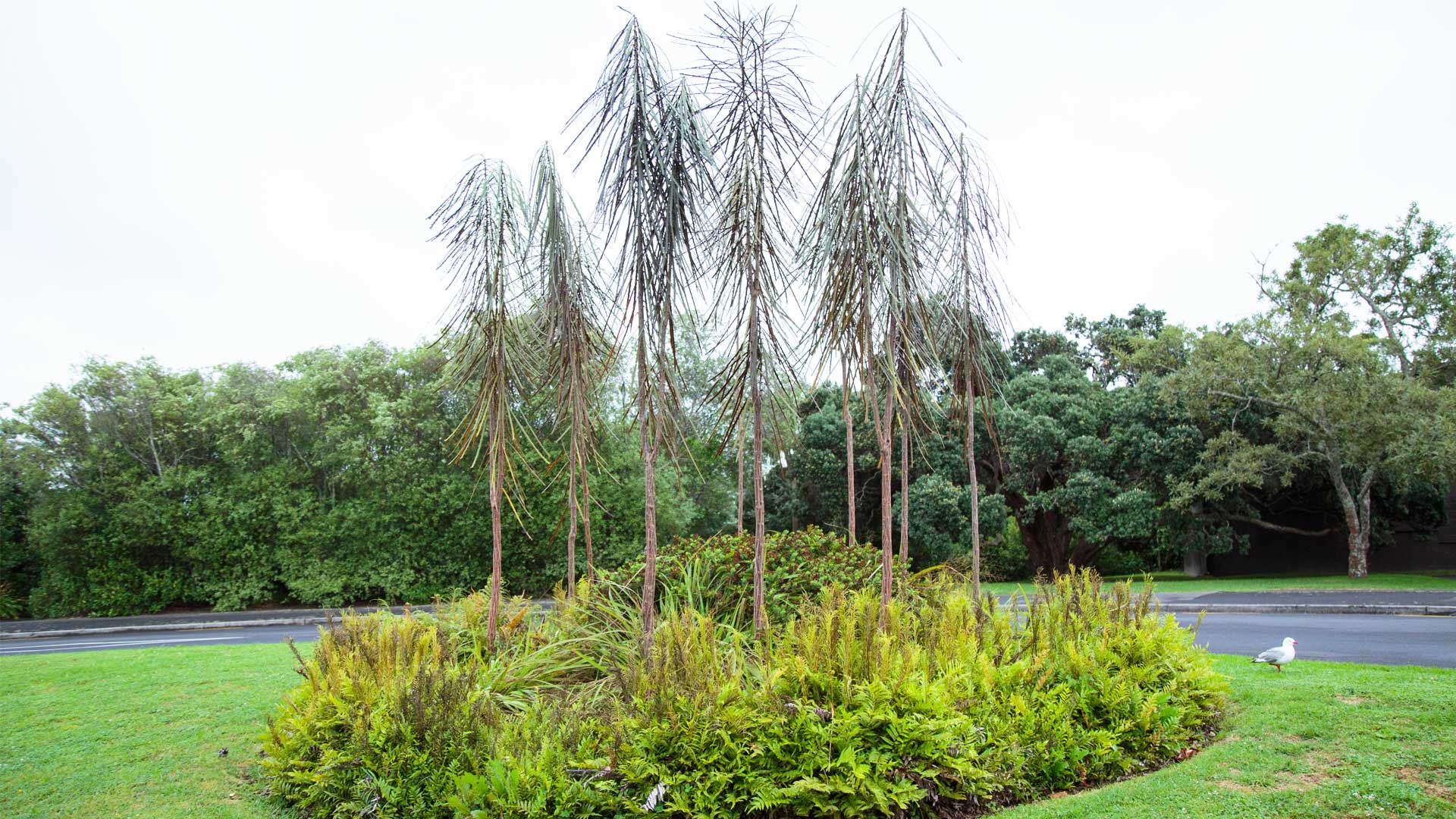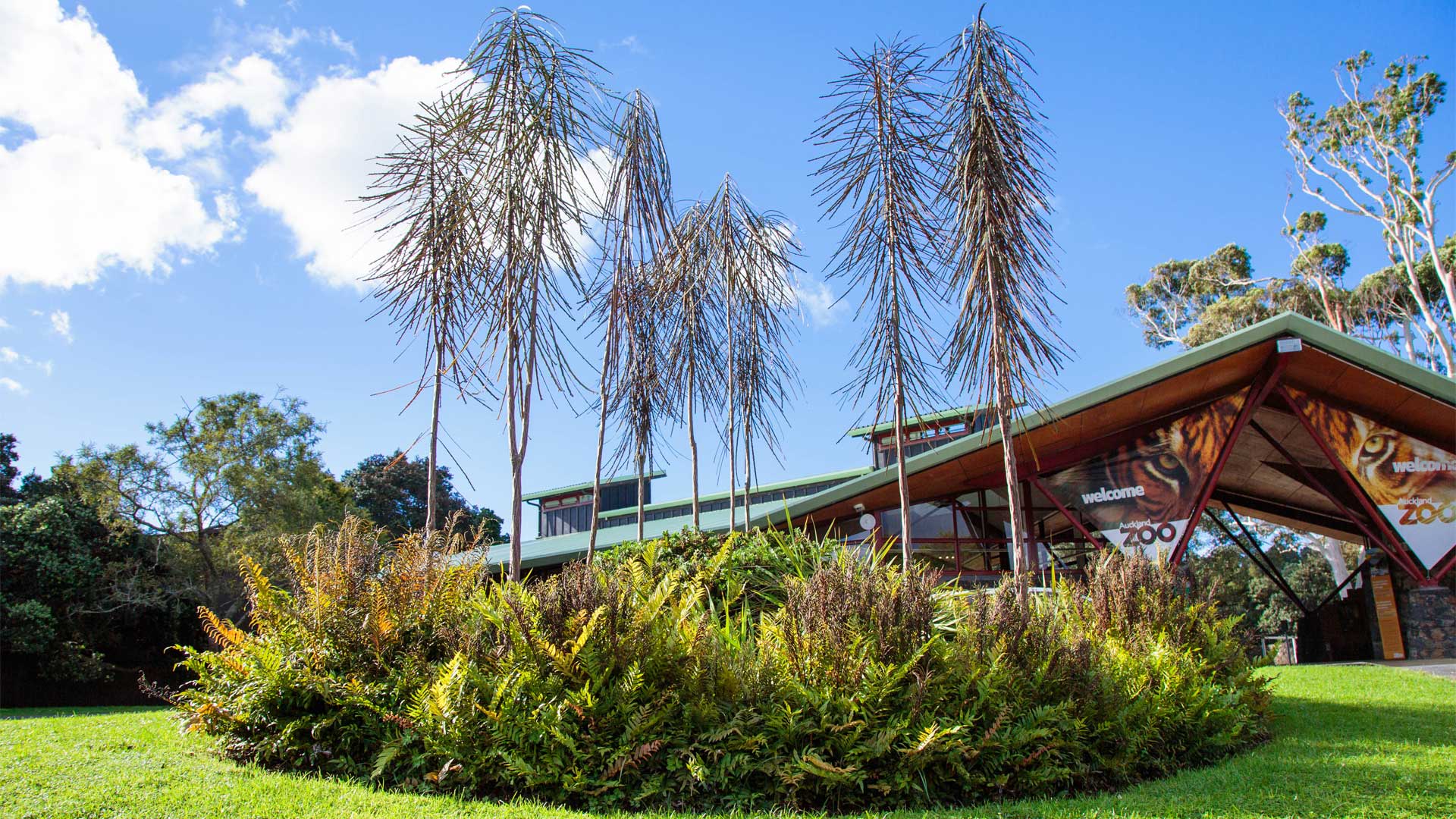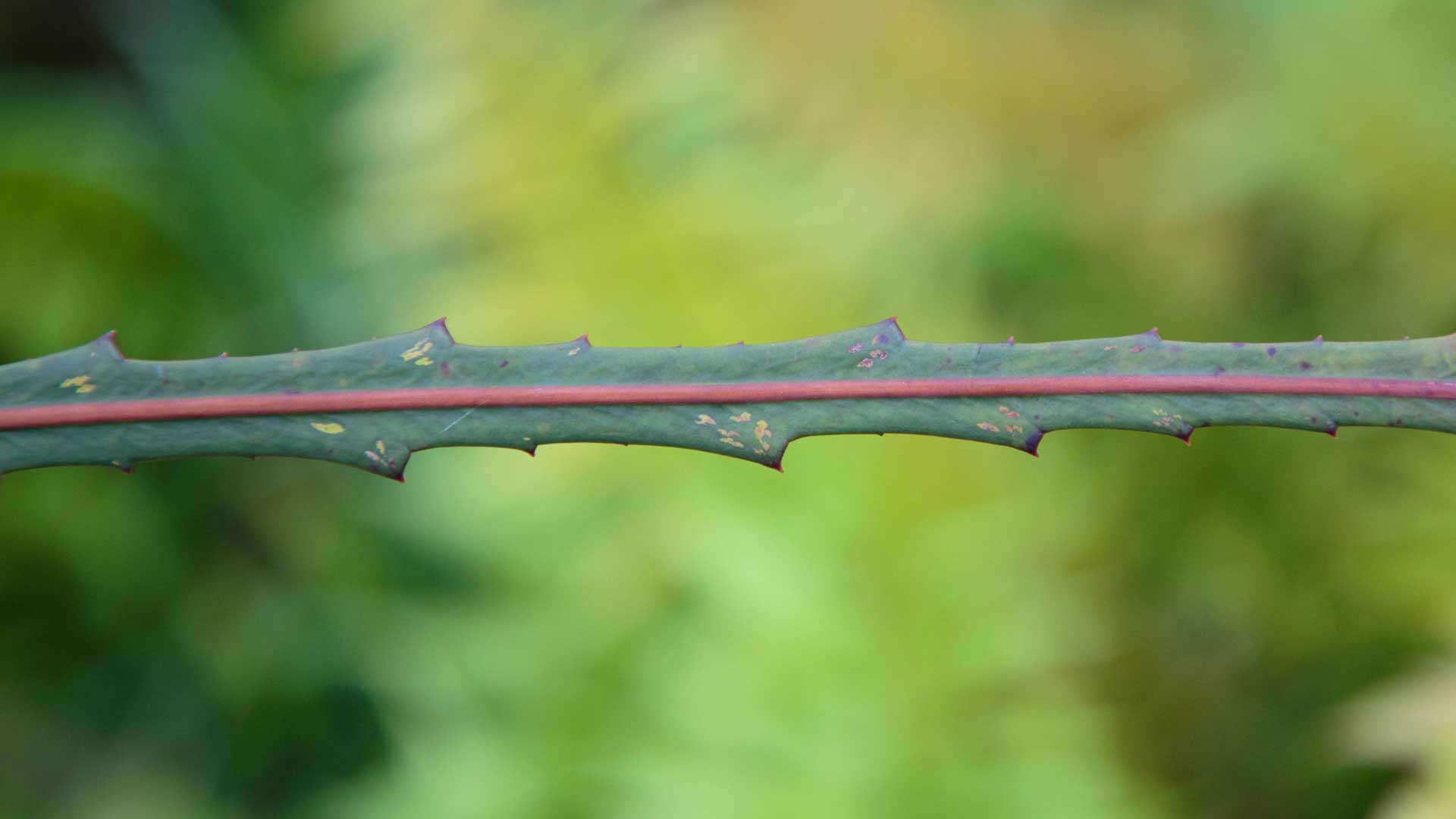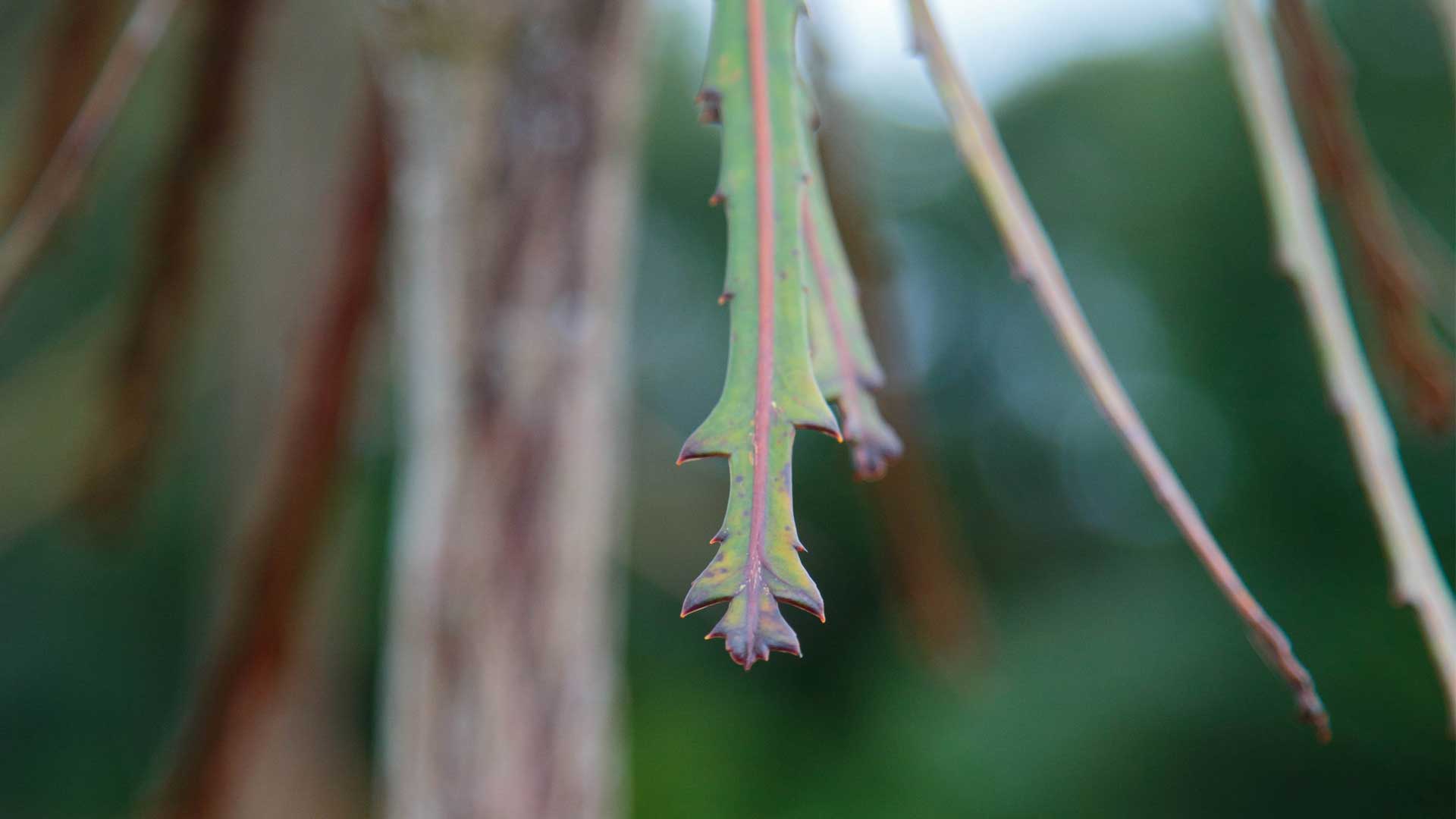This species is endemic to lowland forests and therefore found in much of the country, from Cape Reinga to Stewart Island / Rakiura. Not surprisingly due to its abundance, horoeka wood was used by Māori to fashion bird spears (maiere) to catch kererū, craft teka (darts), hïnaki (eel pots) and brushes (paraehe) making it part of New Zealand’s cultural history. The small yellow flowers that are produced once the tree has reached maturity are replaced by dark purple fruits that provide food for tūī and other endemic birds.
With their sculptural lines and compact habit, horoeka are a great tree to choose when the area for planting is at a minimum. These evergreen trees create a dramatic focal point to any garden without having to relinquish much in the way of space – and with the variations they bring, will delight for years to come.
Why not visit our zoo and relax in our stunning grounds! You can see our juvenile horoeka standing guard just before our zoo entrance and adult specimens can be found in the fernery adjacent to the central lake. We have so much appreciation for our amazing horticulture team and the work that goes in to keeping the zoos plant life lush and healthy.
Stay tuned for the next blog in this series and if you have any recommendations on plants we should cover or questions for our horticulture experts, flick us an email!


